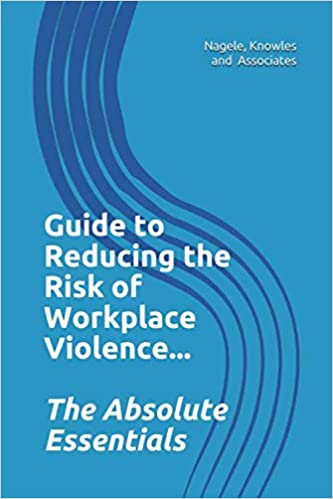Who says you can’t do it all?
LEADERS: You can have EXCELLENCE in all Four of the Legs on YOUR WORKPLACE’S SAFETY CULTURE STOOL! HERE’s HOW and WHY!
Understanding each of the 4 Legs of the SAFETY CULTURE EXCELLENCE STOOL – It’s Essential for Leaders!

Are you a CEO, an executive, or a safety leader in your Workplace? Regardless of the titles we hold or the initials that we give to Health, Safety and Environmental endeavors…it still comes down to people being in the workplace who are fully cognizant of and devoted to reducing the risks of harm to employees in that workplace – physical or psychological. And, the ability to instill mindsets with our people to “want to protect themselves” and “to go home at the end of the day with all their parts (legs, arms, eyes, ears) intact” – the behaviors they choose are critical, as are the behaviors our Leaders Expect, Embrace and Enforce.
OSHA tells us that despite new technologies, more mandatory training, more regulations, more policies and procedures, and yes, more compliance officers…the annual statistics for fatal injuries and recordable injuries on the job have hardly moved the needle. Similarly, the top 10 most cited violations keep showing up…Falls, Scaffolding, Ladders, Lock-Tag-Try, Powered trucks, Machine guarding and Hazard Communications/exposures. Why is that?
Why isn’t progress happening? (Experts tell us that genuine employee engagement is dropping while these statistics rise!)
In the past, we’ve talked about the 3-legged stool of Workplace Safety for which safety leaders must be focused, including:
- Occupational Safety: Related to potential injuries from slips, trips, moving machinery, etc.
- Occupational Health: Related to preventing latent, long-term effects from potential injuries like carpal tunnel, and effects of inhalations – asbestos being an example. (Now, of course, in the time of COVID 19 we have even more to concern ourselves in the Health-arena).
- Process Safety Management (PSM or PSMS): Ensuring standards are complied with (OSHA) in many industries that handle hazardous substances (intended to prevent or minimize the consequences of a catastrophic release of toxic, reactive, flammable or explosive HHC’s from a process).
It is a big job – keeping people safe – regardless of which leg of the stool we’re particularly focused upon.
Yet, today, with this new decade of workplace violence rearing its ugly head, we know that we have to add a fourth leg to the Safety Stool. This 4th leg addresses the security/civility of our people – because diligent awareness to workplace violence prevention is required (to promptly address inside harassment/bullying and incivility or to thwart a provoked active shooter who enters the Workplace to do harm).
- Social Risk: The fourth leg of the stool is what is called “Social Risk.” Another way to say it is the psychological harm that comes with repeated bullying, harassment, dysfunctional behaviors, (civility not being required), that leave workers dreading to go to work, or that increase the risk of home-growing an active shooter, or having a suicide or murder in your workplace, let alone the bad press that comes with a highly-publicized incident. Requiring a civil workplace is integrated here. Not paying attention to social risk manifests into psychological harm as the continuum of bad behaviors escalate in the workplace – and ultimately, can impact people in harmful ways. (Add COVID 19 to the mix and this 4th prong of Social Risk takes center stage.)
Roll it all up and what do you have?
The Safety Leadership Biggie: Workplace Culture.
SO…what can YOU do about this? How do you get out in front of it?
In the Professional Safety Magazine a couple years ago, a peer-reviewed article on safety culture showed that, “Leadership is the antecedent to safety culture and is essential for fulfilling the intent of OSH throughout industry. It is critical to the creation, support and drive of an organization’s safety culture.” Also, “Executives and Safety Leaders should understand the impact that their Leadership style can have on Safety culture.”
We couldn’t agree more!
We look at the “whole organization’s culture” – including safety, security, civility, and the means and quality of engagement. Leadership makes the impactful difference. The OSHA general duty clause requires that employers provide a “safe workplace environment” for employees. There’s no doubt that a hostile environment/toxic workplace impacts the psychological safety of workplaces (i.e., bullying, harassment, sexual harassment, vengeful acts). There’s no doubt that disregard for OSHA regulations impacts the physical safety of the people in our workplaces. There’s no doubt that the security of our facilities and people’s awareness of intrusion/perpetrators intent to do harm, is critical. (i.e., workplace violence prevention/security vulnerability). There’s no doubt that when the above focus is absent, effectiveness plummets.
Leadership should hold the expectation that their people need to return home from work whole – no one harmed physically nor psychologically – and be willing to hold that principled-stand (always). From that public stance, leaders can move forward, choosing to live that value in their actions and making an effective difference. Engaging effectively with your people – at all levels is key to safety leadership.
CEOs, leaders, safety officers, team leaders set the safety, health, security and social-related culture, period. Leaders are charged to ensure that culture remains steadfast and promptly address the behaviors that bring down people and teams.
There can be no ignorance of, or turning away from, dysfunctional or unsafe behaviors that need to be identified and addressed, or safety rules that have been violated. Leaders are charged with enforcing the standards of the organization (and not selectively). A lack of engaged leadership and/or allowing incivilities lead to issues on several fronts – so every organization needs to be creating this authentic essence – across the board – across all 4 legs of the safety stool.
“It is too much,” you say? “You Can’t Do It All?”
Oh, Yes, YOU CAN!
If you consider two sides of the penny metaphor (Lincoln’s face side indicative of the people/psychological side, and the Lincoln Memorial’s facility side indicative of the safety/security side of the organization), then you can clearly see that the copper in the penny – that integrates both sides and throughout – is indeed, the LEADERSHIP component of the metaphor. That’s the leadership effect on workplace culture.
Leadership practices (i.e., level of engagement, degree of autonomy, enforcement of standards, clarity of focus, amount of collaboration, cohesiveness, support, communications/feedback, etc.) are key to an organization’s effectiveness. And leaders are just like that copper – they impact the whole enchilada – or, per the metaphor, the whole penny – the whole organization.
For us at NageleKnowlesAndAssociates.com, we look very closely at Leadership. It doesn’t take much to see when an organization lacks good leadership. It shows up in Safety compliance, in your entire stance on Safety and Health and Civility – across the board, in your overall culture, in security measures and in active shooter readiness, in workplace performance and results, in employee engagement, civility, turnover, involvement, participation, in awareness of what is happening within (i.e., bullying, harassment, cover-ups), and in leadership’s effectiveness to create, maintain and embrace the value of every person as an individual, thus enabling a positive and safe workplace culture. All of these can be changed for the better – and very quickly.
We Teach Leadership.
 We teach how leaders (up and down the organization) can get it all done – by understanding first, how to lead and to know and follow the tenets of authentic Leadership, including embracing the Engagement Diamond© – a leadership process of Richard N. Knowles and Associates. And, we also teach (every level of your organization) how to effectively engage the people you’ve hired to work together in your organization to do their work with the highest attention to safety, security, civility and effectiveness. It can be done! (We’ve proven that over and over again).
We teach how leaders (up and down the organization) can get it all done – by understanding first, how to lead and to know and follow the tenets of authentic Leadership, including embracing the Engagement Diamond© – a leadership process of Richard N. Knowles and Associates. And, we also teach (every level of your organization) how to effectively engage the people you’ve hired to work together in your organization to do their work with the highest attention to safety, security, civility and effectiveness. It can be done! (We’ve proven that over and over again).
To this point, we invite you to connect with Amazon to order up a copy of our Amazon best-selling book, “Guide to Reducing the Risk of Workplace Violence – the absolute essentials.” In it we address the entire spectrum of workplace violence – the culture that extends from the psychological aspects to the physical aspects to the Leadership aspects, and to the active shooter aspects.
It is a safety/health/security/civility spectrum and it translates both to the Professional Safety Magazine article and to what we do for Leaders and their Teams, in their Workplaces every day.






Speak Your Mind